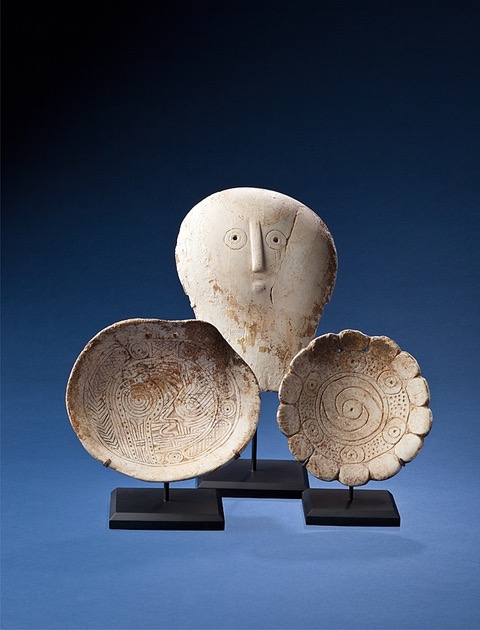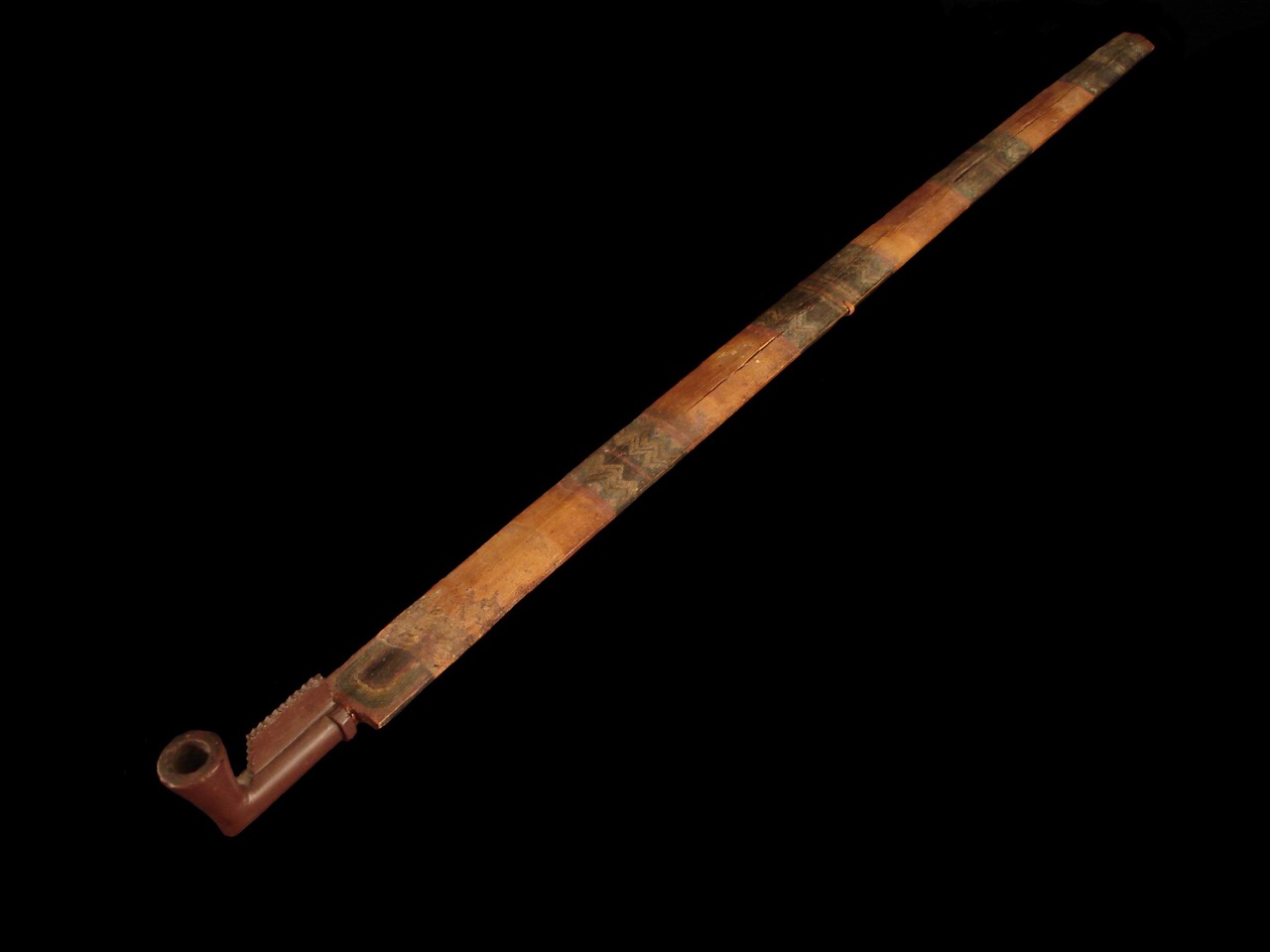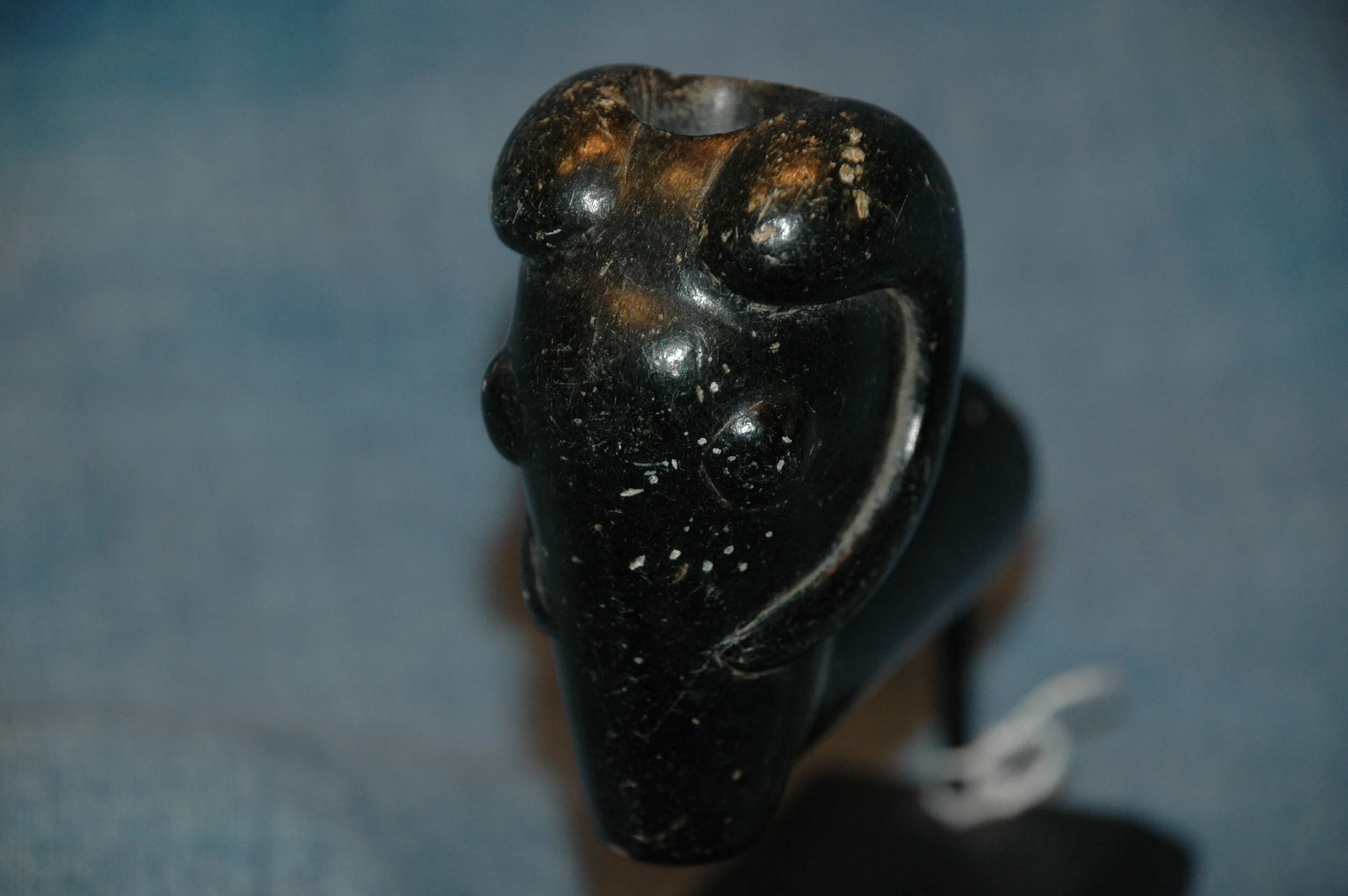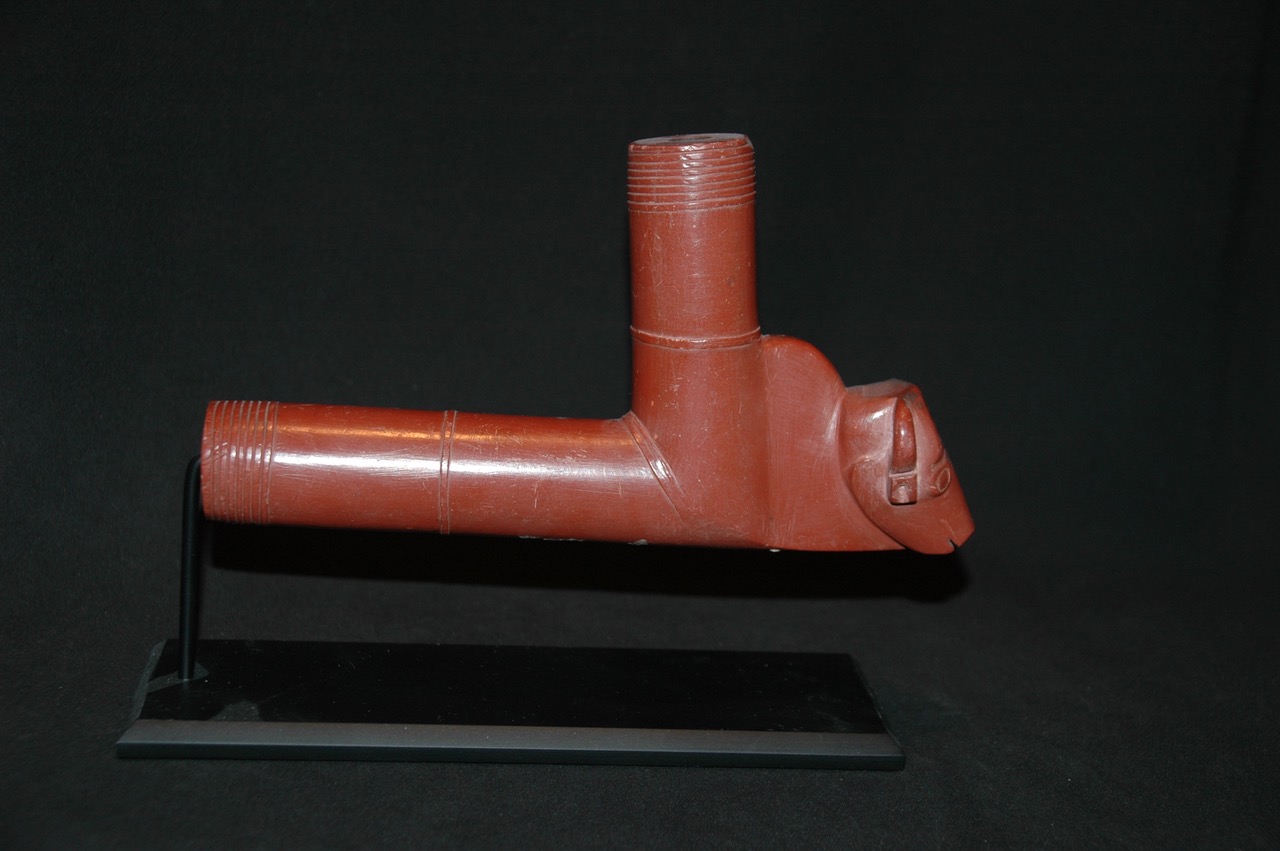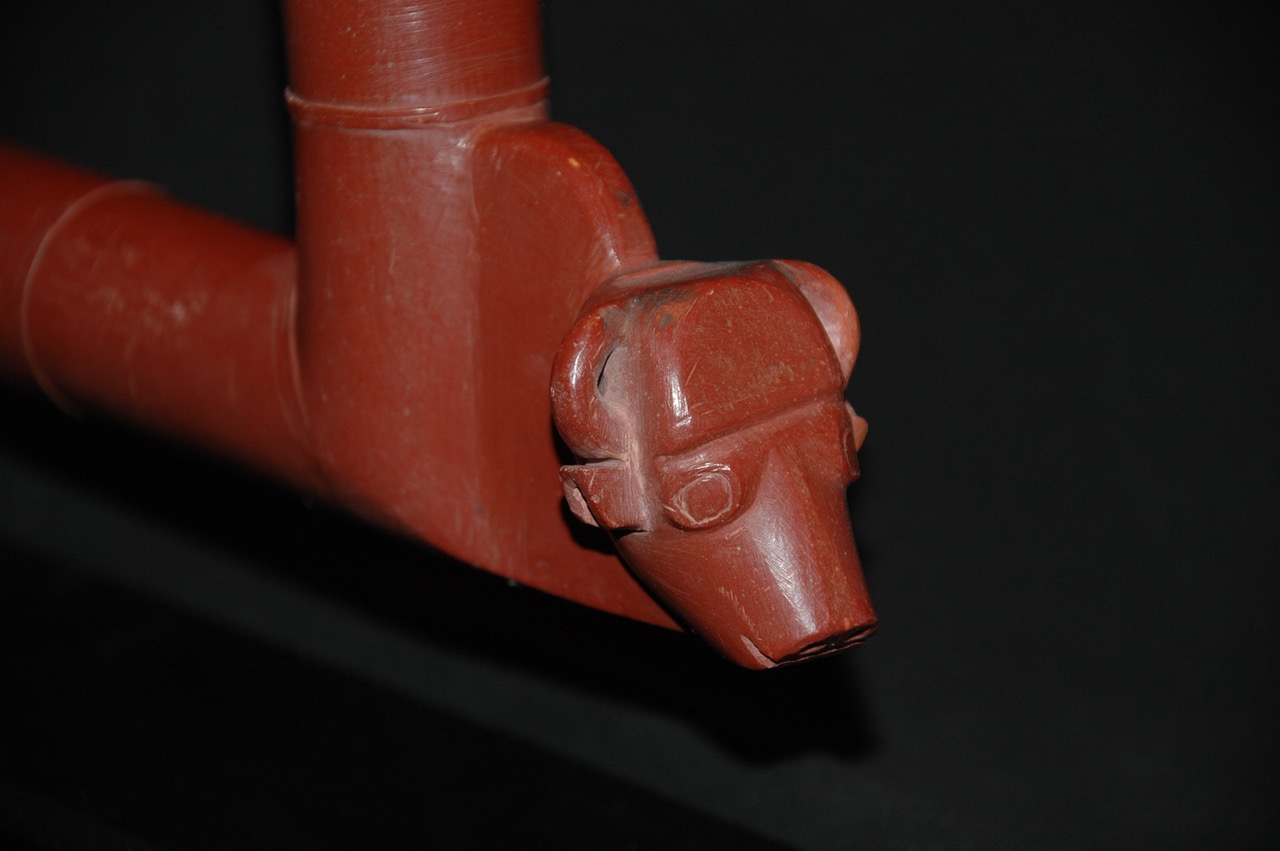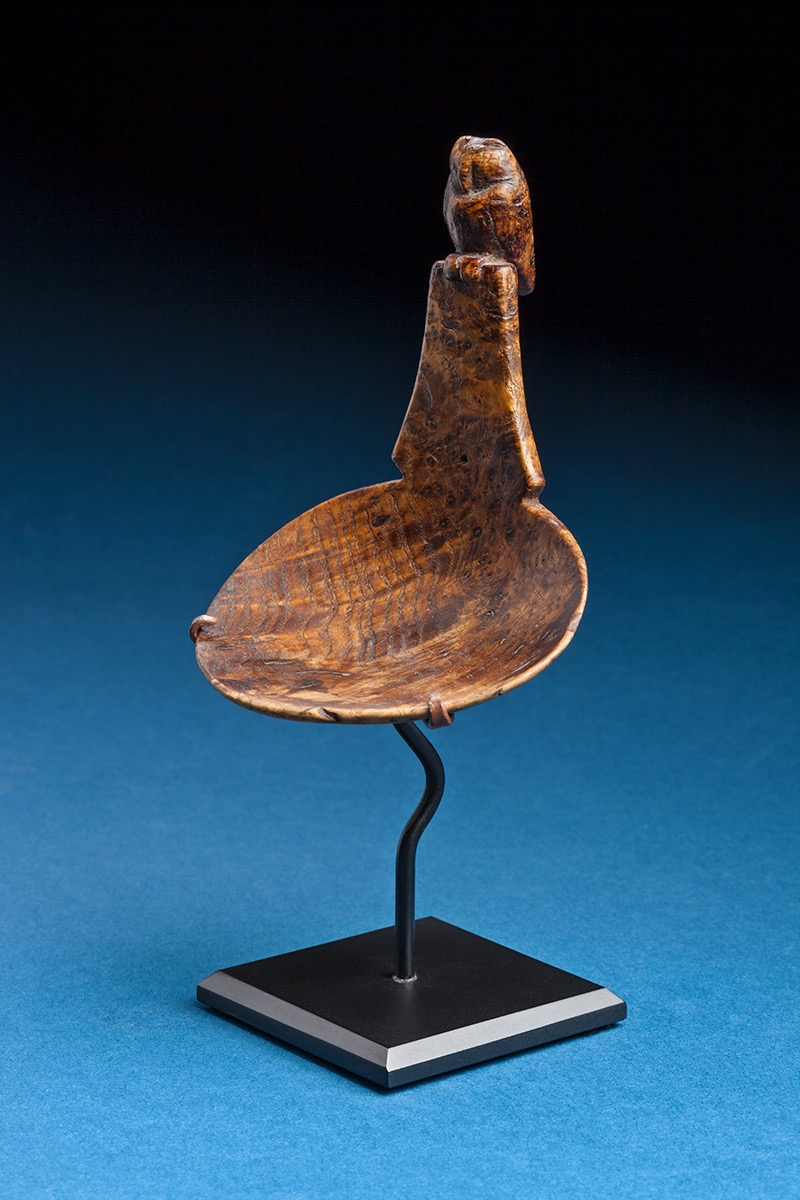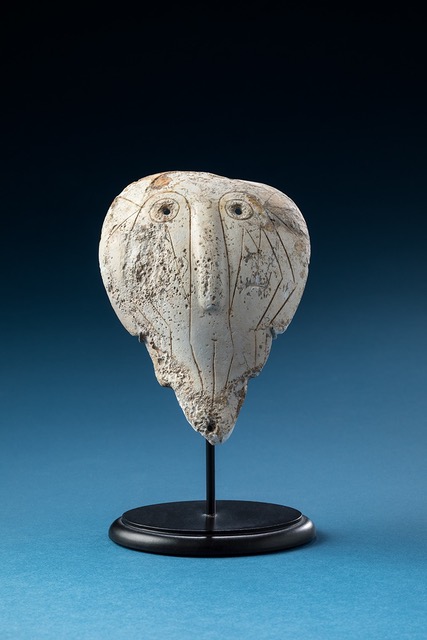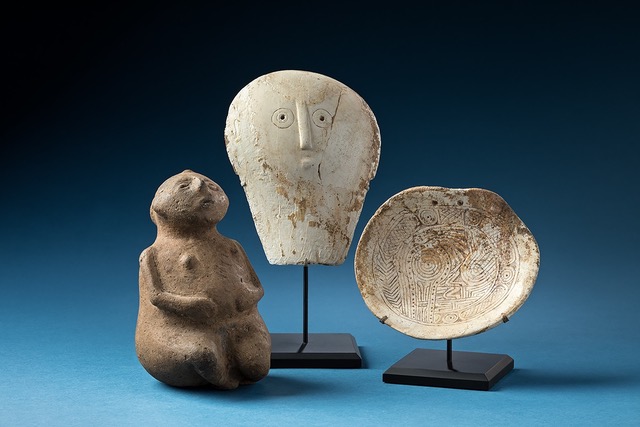Pipes / Sculpture
With the exception of the Northwest Coast, very little monumental sculpture was produced by Natives in pre-20th century North America. Most of the Native sculpture produced prior to the 20th century tended to be small and portable, yet often exquisitely carved and powerful. The most commonly produced sculptures were associated with the ritual of smoking, both pipe stems and pipe bowls. Bowls and stems were produced in large quantities by both Plains and Woodland carvers in the 19th century for Native and tourist consumption.
Pipe bowl carvings are sometimes very simple, and sometimes elaborate depictions of humans and animals. The carvings are imbued with an inner strength. As works of sculpture they are compressed forms, distilling the essence or spirit of the subject.
I have also included in the sculpture gallery some Late Prehistoric or Mississippian carved and engraved marine shell. Quantities of marine shell was traded/exchanged from the tip of Florida into the interior of what would become the United States between AD 800 and AD 1600. During this time period, Native Peoples of the Midwest and South were primarily agriculturists and developed stratified societies with elaborate ceremonial systems. They lived in large villages with populations in the thousands, possibly as large as ten thousand. Marine shells were primarily carved into pendents and beads serving as status symbols and denoting ceremonial beliefs and affiliation.
I have a number of superb examples of incised shell gorgets and shell masks for sale, all with good provenience. There is something about these works of art that remind me of both PreColumbian art as well as Greek Cycladic art. I find these shells incredibly compelling and other worldly.



